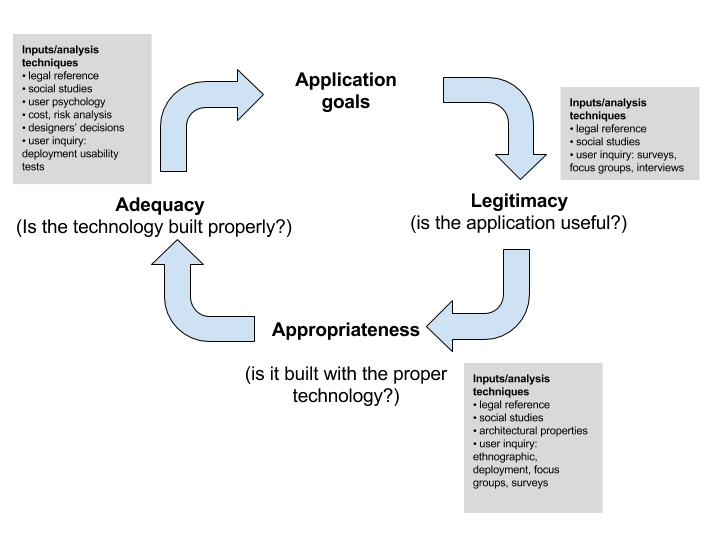Eva Lenz, Sarah Diefenbach and Marc Hassenzahl proposed the Interaction Vocabulary, obtained after evaluating different interactions through the why-, what- and how- framework (a simplistic form of Goal Oriented Analysis).
| Experience | Interaction Attributes | Experience | |
| Esteem, focus on the interaction itself, significance of the present moment, relaxing, calming, accuracy, care, appreciation of interaction/product | slow | fast | Animating, stimulating, activating, efficiency, focus on instrumental goal of interaction, expression of willpower. |
| Ritualization, every step is meaningful, rewarding, emphasis on progress and advance of the process, approaching a goal step by step, clear structure, being guided through the process | stepwise | fluent | Autonomy, continuous influence, power and right to change what’s happening at anytime of the process, no barriers, fluent integration in running process, spurring instead of interrupting |
| Instant feedback makes own effect experiential, competence, feeling of own impact creates a feeling of security, you see what you do, makes immediate correction possible, nothing in between, you experience what you do, increase of competence, the instant feedback creates a feeling of recognition. | instant | delayed | Emphasizing the moment of interaction, creating awareness. Centering on the interaction itself rather than its instrumental effect. |
| Influence by intuition, control | uniform | diverging | Unusual, unnatural, amplified, grasping for attention |
| Creates feeling of security | constant | inconstant | Liveliness, suspense, you can’t adapt yourself to it, unreliable, chance as an idea generator |
| Uncertainty, ambiguity, magic, handing over the responsibility (the interaction happens somewhere else), you don’t put much of yourself in it m | mediated | direct | Significance of your own doing, face-to-face contact, experiencing affinity, self-made, close relation to the product, feeling of constant control |
| not feeling as a part of it, feeling of distance | spatial separation | spatial proximity | Personal contact, feeling of relatedness, safety (you know exactly what you did), being a part of it, intensive examination of details |
| Deeper analysis is needed, room for variation = room for competence, room for new ideas, exploration | approximate | precise | Safety, no changes = room to concentrate on something else/competence in other fields, exact idea of result, always exact the same |
| Carefulness, awareness, appreciation, making a relationship with the thing (being gentle with it), being a part of it, revaluation of the action, raises the quality, allows to perform a loving gesture | gentle | powerful | Archaic interaction, sign of strength, power, effectiveness |
| Low challenge, no room to experience competence, no room for improvement, becomes side issue, doesn’t matter | incidental | targeted | Appreciation, significance of interaction, worthy of attention, high challenge, high concentration, room for competence |
| Conscious of the significance of your own doing, assurance, security, goal-mode, seeing what is going on, expressive, very easy | apparent | covered | magic, excitement, exploration, action-mode, witchcraft, deeply impress somebody |
Sources:
E. Lenz, S. Diefenbach, and M. Hassenzahl, “Exploring relationships between interaction attributes and experience,” in Proceedings of the 6th International Conference on Designing Pleasurable Products and Interfaces, 2013, pp. 126–135.